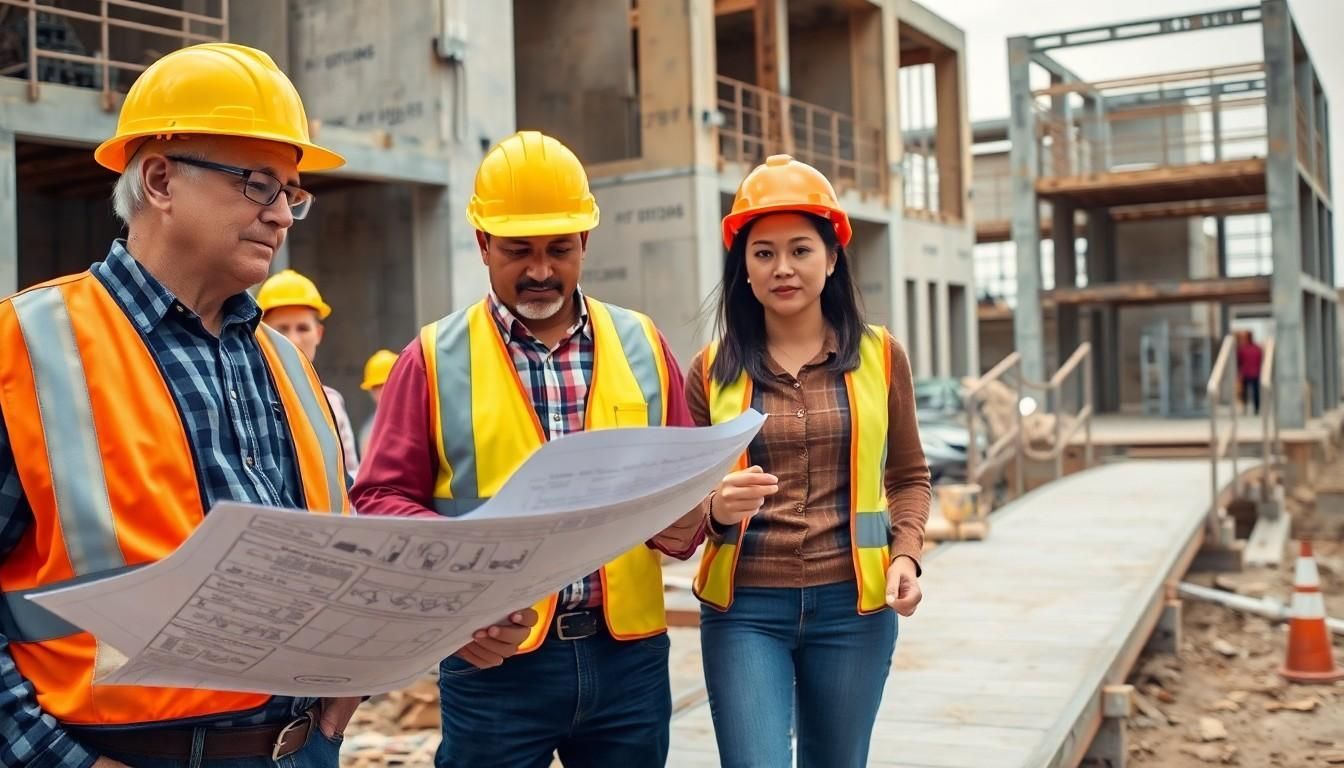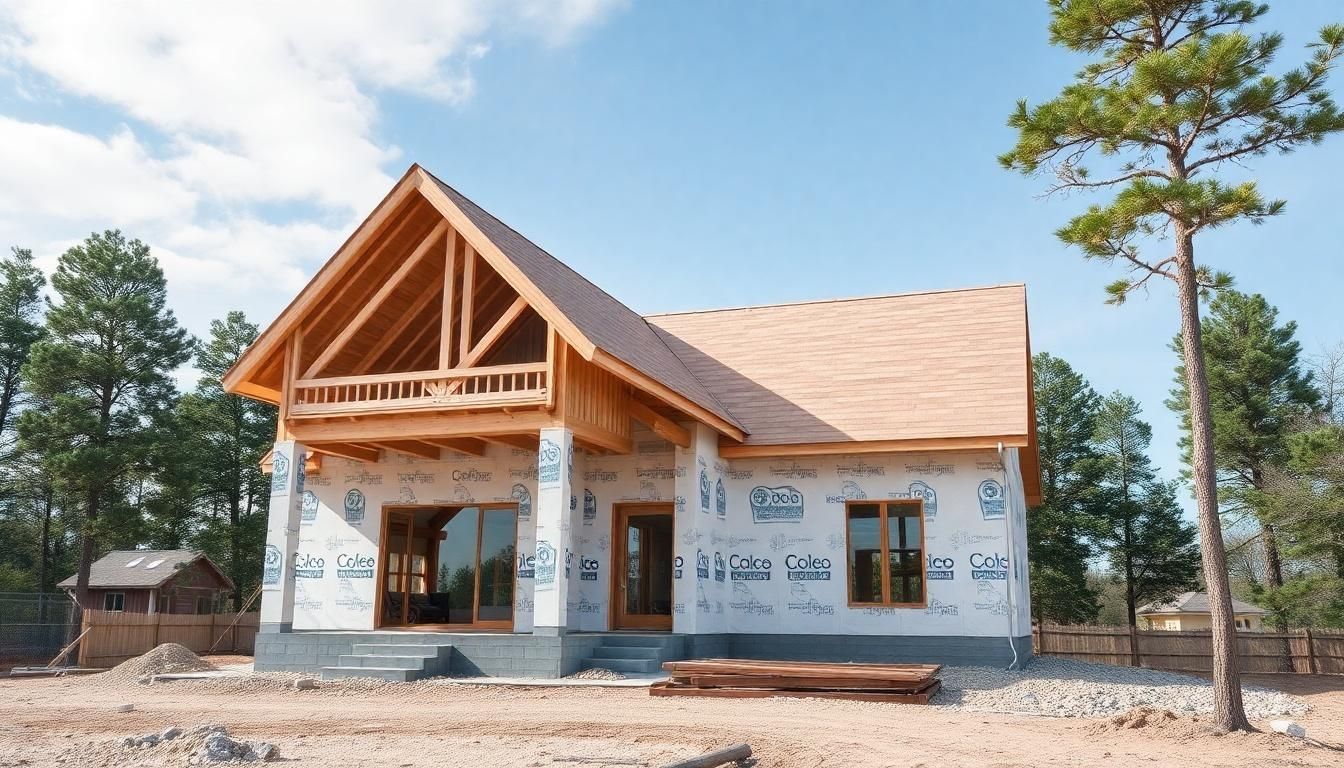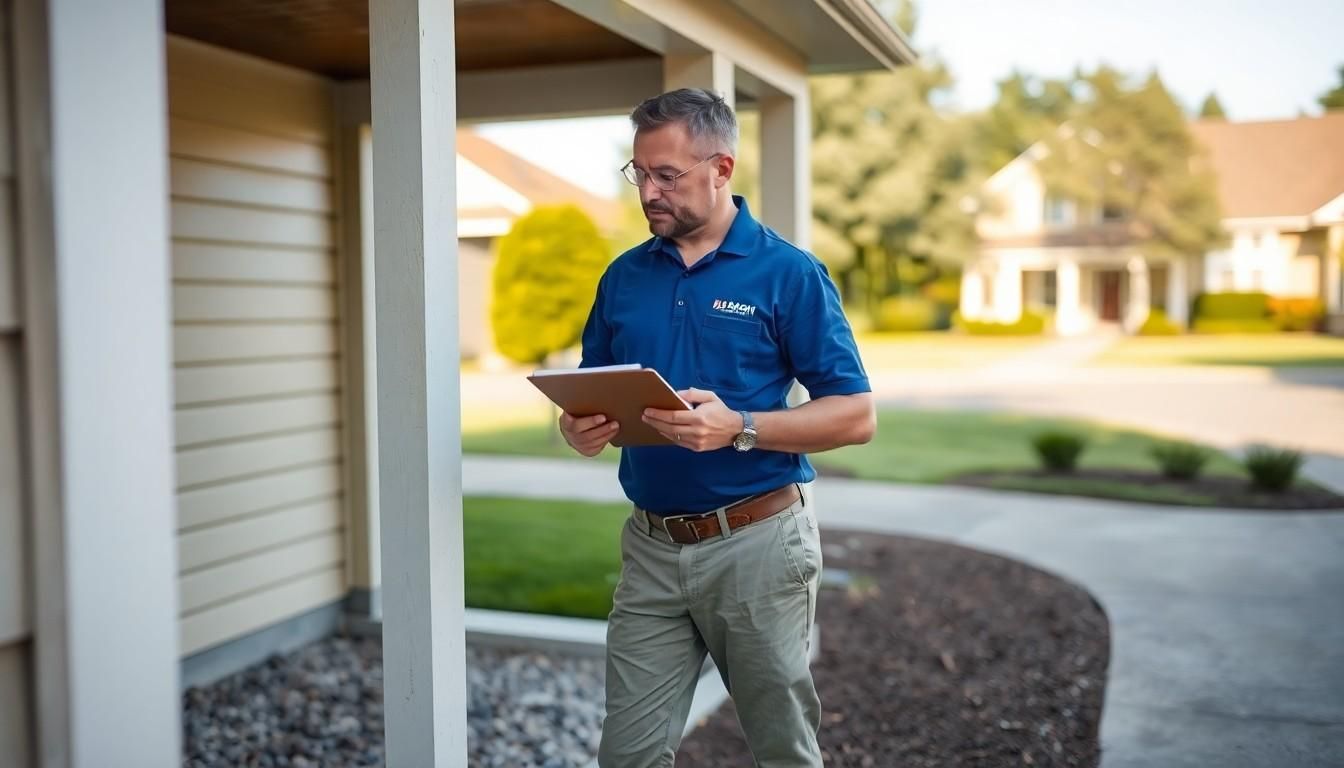How to Interpret Home Inspection Results Easily
- Home inspection reports evaluate structural integrity, roofing, electrical, plumbing, and HVAC systems.
- Major red flags include structural issues, electrical hazards, plumbing problems, roofing damage, and environmental hazards (mold, radon, asbestos).
- Key jargon includes: Functional/Operational, Deferred Maintenance, Satisfactory, Significant Deficiency, and Material Defect.
- Address environmental concerns early to maintain health and property value.
When faced with a home inspection report, do you find yourself overwhelmed by intricate details and technical jargon that might impact the value and safety of your property? Understanding these reports is crucial for any property owner, as they provide a comprehensive assessment of structural components, roofing, and essential systems like plumbing and electrics.
This article will guide you through interpreting home inspection results, demonstrating how this knowledge can protect your investment and aid in making informed decisions regarding potential repairs or negotiations. Ready to become a savvy evaluator of your property's condition? Read on for expert insights.
Understanding Common Sections in a Home Inspection Report
A home inspection report provides a detailed look at a property's current condition. It assesses many components, including structural integrity, roofing, electrical systems, plumbing, and heating/cooling systems. Each section gives an overview of the property's state and pinpoints potential issues or areas needing attention.
Understanding each part of the report is crucial. For example, the structural section checks the foundation, walls, and framing, vital for stability. The roofing section inspects the roof for damage or wear that might lead to leaks. The electrical assessment ensures that wiring, outlets, and panels are safe and functional, while plumbing checks for leaks or faulty fixtures. Heating and cooling evaluations confirm these systems work efficiently, which is key for a comfortable indoor climate.
Knowing these sections helps owners and buyers make informed decisions. Understanding what each part of the report means allows them to prioritize repairs, budget for future maintenance, and negotiate better with sellers. This knowledge aids in tackling immediate concerns and planning long-term property care, ensuring the investment's safety and soundness.
Identifying Major Red Flags in Inspection Findings

Spotting major red flags in inspection findings is vital for property owners and buyers. Recognizing issues early can prevent expensive repairs and ensure safety. Red flags often include critical structural issues, major system failures, and environmental hazards. Understanding these issues' severity is essential, as they can significantly affect property value and safety. Reports may use color coding to show seriousness: green for no issues, blue for minor concerns, yellow for moderate concerns, and red for major issues needing immediate attention.
Here are five common red flags in inspection reports:
- Structural Issues: Look for foundation cracks, sagging roofs, or compromised walls that threaten building integrity.
- Electrical Hazards: Watch out for faulty wiring, outdated panels, or inadequate grounding posing fire risks.
- Plumbing Problems: Issues like leaks, poor water pressure, or aging pipes can lead to water damage and costly repairs.
- Roofing Damage: Missing shingles, leaks, or structural damage could cause water intrusion.
- Environmental Hazards: Be aware of mold, radon, or asbestos, which can pose serious health risks requiring specialized remediation.
Interpreting Technical Jargon in Home Inspection Reports
Understanding technical jargon in home inspection reports is key to assessing property condition accurately. Reports often use specific terms to describe components' statuses, confusing those unfamiliar with the language. Five common terms include:
- Functional/Operational: The item functions as intended without issues.
- Deferred Maintenance: Delayed maintenance might lead to problems if not addressed.
- Satisfactory: Meets acceptable standards with no immediate concerns.
- Significant Deficiency: Notable issue needing attention, potentially impacting safety or function.
- Material Defect: Major problem affecting value or safety.
Familiarity with these terms helps interpret reports accurately. Understanding the language helps prioritize immediate repairs and plan future maintenance. This knowledge supports evaluating the property's state, budgeting for repairs, and negotiating with sellers. Correctly interpreting jargon ensures critical information isn't missed, aiding sound decision-making.
Prioritizing Repair Needs Based on Inspection Outcomes

Prioritizing repairs after a home inspection is crucial for maintaining value and safety. Major issues like structural problems, electrical hazards, and plumbing issues should come first to prevent further damage and costs. Focus on problems posing financial or safety risks, while minor issues may wait.
Follow these steps to assess and prioritize repair needs:
- Identify Major Issues: Focus on significant concerns like structural defects or critical plumbing problems needing immediate attention.
- Consult with Professionals: Seek experts like engineers or electricians to evaluate problems and provide repair estimates.
- Evaluate Cost and Impact: Consider financial implications of repairs; prioritize costly or highly impactful ones.
- Consider Future Maintenance: Address repairs preventing future issues to save costs long-term.
- Set Realistic Timelines: Plan timelines for repairs based on urgency and budget.
Effective prioritization influences negotiations and maintenance planning. Focusing on essential repairs allows buyers to negotiate with sellers for repair credits or price adjustments. Sellers can address key issues before listing to enhance appeal. For homeowners, a good repair plan is a roadmap for ongoing maintenance, safeguarding property value and livability.
Final Words
Navigating a home inspection report involves understanding its various sections, identifying major red flags, and interpreting technical jargon. Recognizing these elements is key to making informed decisions about property maintenance and safety.
By prioritizing repair needs, property owners can effectively negotiate with sellers and enhance property value while addressing immediate safety and environmental concerns.
Understanding how to interpret the results of a home inspection equips property owners with the knowledge needed to protect their investments and ensure regulatory compliance.
FAQ
What is an example of a home inspection report?
A typical home inspection report includes detailed sections on property condition, covering structure, roofing, electrical, plumbing, HVAC systems, and any areas of concern with supporting photos.
What are the red flags in a home inspection report?
Red flags include significant structural issues, major system malfunctions, environmental hazards like mold, and serious safety risks such as electrical failures. These can significantly impact property value and safety.
Does a home inspection report become public information?
Home inspection reports are generally confidential between the buyer and the inspector unless shared by the buyer. It's private due to the personal data it may contain about the property owner.
How should a home buyer act after reading the inspection report?
Following an inspection report, buyers should evaluate major issues, consult with professionals, negotiate repairs, or adjust the purchase offer based on findings and severity of concerns.
What does "inspection report" mean?
An inspection report is a document detailing a property's condition, including structural and system assessments, highlighting defects or necessary repairs for potential buyers or owners.











